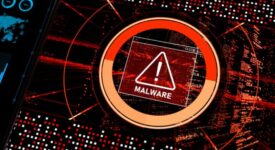
reader comments
39 with 29 posters participating
Hardware that is widely used to control equipment in factories and other industrial settings can be remotely commandeered by exploiting a newly disclosed vulnerability that has a severity score of 10 out of 10.
The vulnerability is found in programmable logic controllers from Rockwell Automation that are marketed under the Logix brand. These devices, which range from the size of a small toaster to a large bread box or even bigger, help control equipment and processes on assembly lines and in other manufacturing environments. Engineers program the PLCs using Rockwell software called Studio 5000 Logix Designer.
On Thursday, the US Cybersecurity & Infrastructure Security Administration warned of a critical vulnerability that could allow hackers to remotely connect to Logix controllers and from there alter their configuration or application code. The vulnerability requires a low skill level to be exploited, CISA said.
The vulnerability, which is tracked as CVE-2021-22681, is the result of the Studio 5000 Logix Designer software making it possible for hackers to extract a secret encryption key. This key is hard-coded into both Logix controllers and engineering stations and verifies communication between the two devices. A hacker who obtained the key could then mimic an engineering workstation and manipulate PLC code or configurations that directly impact a manufacturing process.
“Any affected Rockwell Logix controller that is exposed on the Internet is potentially vulnerable and exploitable,” said Sharon Brizinov, principal vulnerability researcher at Claroty, one of three organizations Rockwell credited with independently discovering the flaw. “To successfully exploit this vulnerability, an attacker must first obtain the secret key and have the knowledge of the cryptographic algorithm being used in the authentication process.”
lace drinking water with lye. Plant employees used the same TeamViewer password and didn’t put the system behind a firewall.
If Logix PLC users are segmenting industrial control networks and following other best practices, it’s likely that the risk posed by CVE-2021-22681 is minimal. And if people haven’t implemented these practices, hackers probably have easier ways to hijack the devices. That said, this vulnerability is serious enough that all Logix PLC users should pay attention to the CISA and Rockwell advisories.
Claroty has issued its own writeup here.





